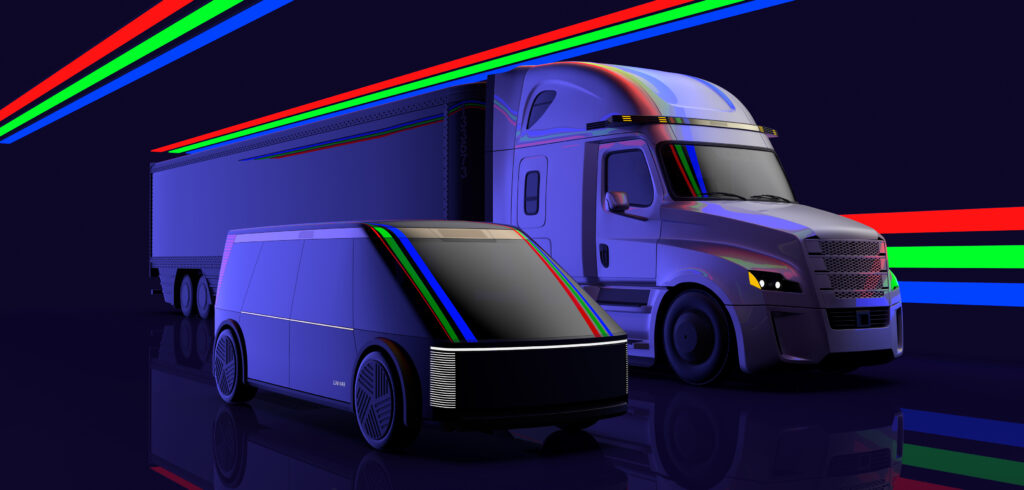At its recent inaugural Studio Day in New York City, lidar developer Luminar Technologies introduced Blade, its vision for the future of design and integration of autonomous technology across robotaxis, trucking and consumer cars. It also showcased the first consumer vehicle fully integrated with Luminar’s Iris lidar, which is on track for series production with the company’s OEM partners starting in late 2022.
“Luminar is making the transition from the leader in lidar to the leader in automotive autonomy and safety. Historically, autonomous vehicle companies have been exclusively focused on robotaxis, but our focus has been building the technology foundation for autonomy starting with consumer vehicles and moving across verticals including trucks and robotaxis,” said Austin Russell, founder and CEO of Luminar. “Ultimately, it takes more than just great technology to deliver great design, and that’s exactly why we’re proud to show off the Blade concept with Iris that goes beyond the cars of today and visualizes the robotaxis and trucks of tomorrow.”
According to the company, Blade shows how autonomous technology can be seamlessly integrated into cars, trucks and robotaxis. It stemmed from a creative collaboration between Luminar and NewDealDesign, led by acclaimed technology designer Gadi Amit. The aim is to create a foundation for a new vehicle architecture that auto makers can incorporate into vehicle development programs from the outset.
“To create the best car design and user experience, autonomous technology must be engineered and designed hand in hand from the ground up,” said Jason Wojack, SVP of product development at Luminar, who honed his design-meets-engineering sensibility as the chief architect of Motorola’s RAZR droid. “Focusing on form and function at not just the lidar level but also the vehicle level has enabled Luminar to spearhead the design integration of autonomous technology, which is among the fastest design breakthroughs in automotive history.”
Luminar claims Iris is the first autonomous technology designed to marry form and function: it seamlessly combines performance, auto-grade robustness, scalability and automotive aesthetic. It was designed from the outset to be cleanly integrated into a vehicle’s roofline, displacing the roof-rack-style conglomerates historically seen on autonomous development vehicles and leapfrogging bolt-on products in development.
“Many technology companies underappreciate the importance of design in envisioning fundamental technology architecture, especially when it comes to automotive. Luminar has redefined AV design with seamless consumer vehicle integration and is taking it to the next level with the Blade concept,” said Amit. “We hope that Blade can become the manifestation of blending lidar, autonomy and next-generation vehicle design in an optimized and iconic way.”
Luminar unveiled two Blade blueprints, both integrating the sensing technology into the roofline of the vehicle, creating an autonomous ‘blade’.
The robotaxi centered around a roomy and inspiring car design for autonomous operation on highways and in urban environments. The ‘blade’ runs down the centerline of the roof, incorporating four lidar units to provide 360° coverage. The truck concept featured a three-lidar setup to provide long-range coverage and the ability to be retrofitted to existing class 8 trucks.


